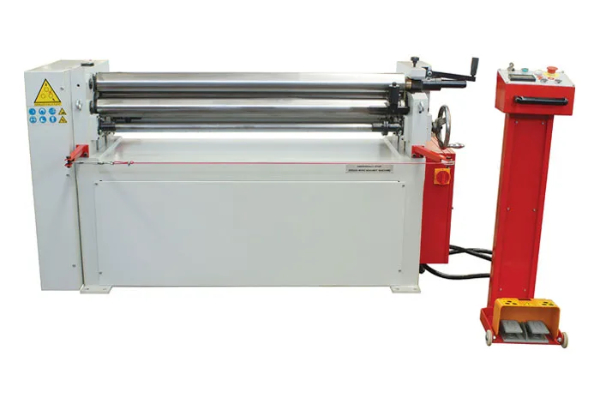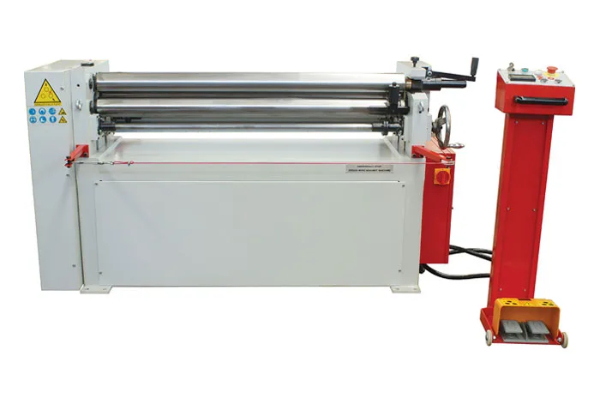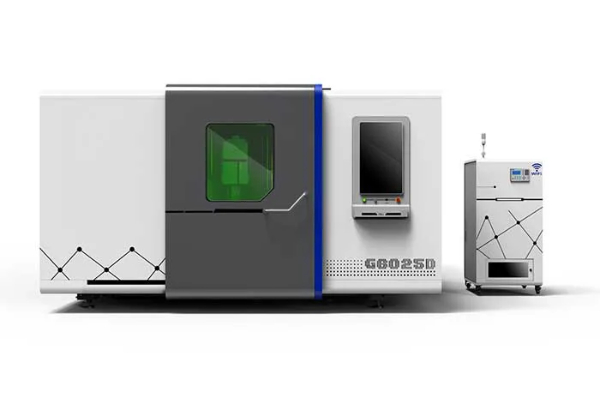
Duct Bending Machine- Hydraulic vs. Mechanical Systems
- By:Metmac
- 2024-07-05
- 76
In the realm of HVAC industry, duct bending machines are essential tools for shaping and forming ductwork. These machines are available in two predominant systems: hydraulic and mechanical. Understanding the distinctions between these systems is crucial for selecting the most suitable machine for specific duct bending applications.
Hydraulic Duct Bending Machines
Hydraulic duct bending machines employ hydraulic fluid to power the bending process. The fluid is pumped into a hydraulic cylinder, which actuates a piston that exerts force on the bending die. Hydraulic systems offer several advantages:
– High Bending Force: Hydraulic systems provide immense bending force, allowing them to handle thick and rigid materials such as galvanized steel and aluminum effortlessly.
– Precise Bending: Hydraulic systems enable precise bending control, minimizing deformation and ensuring accurate duct shapes.
– Ease of Operation: Hydraulic machines are user-friendly and require minimal physical effort. The bending force is controlled electronically, eliminating the need for manual adjustments.
Mechanical Duct Bending Machines
Mechanical duct bending machines rely on a mechanical linkage system to generate the bending force. The linkage system typically involves gears, levers, and cams that translate rotary motion into bending force. Mechanical systems offer certain advantages:
– Economical: Mechanical bending machines are generally more economical than hydraulic systems, making them a cost-effective option for smaller-scale operations or less demanding applications.
– Durability: Mechanical systems are robust and durable, ensuring longevity with proper maintenance.
– Mechanical Advantage: The mechanical linkage system provides mechanical advantage, allowing operators to bend ducts with less physical effort.
Factors to Consider When Choosing Between Hydraulic and Mechanical Systems
The choice between hydraulic and mechanical duct bending machines depends on several factors:
– Application: Hydraulic systems excel in applications requiring high bending force and precision, such as heavy-duty ductwork or precision bending. Mechanical systems are suitable for lighter materials and less demanding applications.
– Production Volume: Hydraulic systems are ideal for high-volume production environments, where speed and efficiency are crucial. Mechanical systems are more appropriate for lower-volume operations.
– Budget: Hydraulic machines are typically more expensive than mechanical ones. Budgetary constraints may influence the choice of system.
– Maintenance: Hydraulic systems require more regular maintenance and servicing due to the use of hydraulic fluid. Mechanical systems require less maintenance, making them a more economical option in the long run.
Conclusion
Both hydraulic and mechanical duct bending machines have their unique advantages and applications. Hydraulic systems provide high bending force, precision, and ease of operation, while mechanical systems offer economy, durability, and mechanical advantage. By carefully considering the factors discussed above, HVAC professionals can make an informed decision and select the most appropriate duct bending machine for their specific requirements.
-
The Advantages of Using a Sheet Roll Forming Machine in Manufacturing
2024/09/14 -
How to Optimize Your Laser Sheet Cutting Machine for Maximum Performance
2024/09/12 -
How to Maximize Efficiency with Modern Sheet Metal Working Machines
2024/09/04 -
The Environmental Benefits of Using Duct Board Grooving Machines
2024/09/03
-
A Guide to the Latest Innovations in Sheet Metal Folding Machines
2024/11/29 -
Key Features to Consider When Investing in a Sheet Metal Folding Machine
2024/11/28 -
Enhancing Precision with Advanced Sheet Metal Folding Machines
2024/11/27 -
How to Choose the Right Sheet Metal Folding Machine for Your Workshop
2024/11/26



